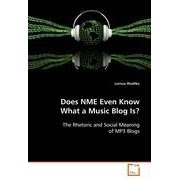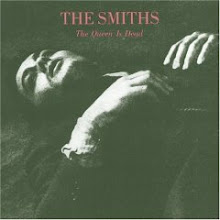
I've read a fair amount of band/artist biographies with varying amounts of interest(oddly enough, as much as I love the band Pulp, their 400-page biography by Mark Sturdy was one of the hardest to conquer). I stumbled upon Michael Bracewell's 2007 biography of Roxy Music, Re-Make/Re-Model: Becoming Roxy Music, by accident while looking for other Michael Bracewell books. You see, I quite like Bracewell's ideas and style; I've read both England is Mine: Pop Life in Albion from Wilde to Goldie and When Surface Was Depth: Death by Cappuccino and Other Reflections on Music and Culture in the 1990's, which both gave me fascinating intertextual insights into popular culture from vastly different angles. The former probes various aspects of Englishness from arcadia to suburbia via John Betjeman, Lindsay Anderson films and The Cure while the latter discussed the atmosphere of the 90s, including a shift from irony to "authenticity" and the gentrification of the avant-garde, and explored topics from Britpop to Howard Devoto to the Millennium Dome to American pop group, Hanson. These earlier works point to Bracewell's intelligent wit and extensive research, aspects which definitely infuse Re-Make/Re-Model.
The key difference with Bracewell's take on Roxy Music's biography, or the band biography genre in general, is that he strictly focuses on the way the band came about; once the band gains a record deal and creates their self-titled first album, the book ends. By the way, this book is nearly 400 pages long. And I finished it in a few days. The difference between this book and that massive history of Pulp is the almost academic take on the ideas, art and socio-historical forces that shaped the band and their music. This book isn't about a meticulous chronology of singles, albums and gigs, power struggles, band member departures, and outrageous gossip. This book isn't about a band's personal relationships as such; it's more about the constellation of people and ideas that provided the perfect conditions to create such a unique band which took high and low art and married them with a camp aesthetic.
The book is divided into three main sections: Newcastle 1953-1968, Reading, Ipswich, Winchester 1964-1969, and London 1968-1972. In doing this, Bracewell can thoroughly discuss the milieus from which Bryan Ferry, Andy Mackay and Brian Eno emerged, parallel them, and then join them up in the final section. Of course there are plenty of interviews with the band members themselves, but there are equal amounts, if not more, interviews with people who had contact with the band members, and in effect, "made" Roxy Music as much as Ferry, Mackay and Eno. In the Newcastle section, you learn about the Richard Hamilton-influenced art school concepts that surrounded Ferry and his fellow students, including Rita Donagh, who eventually ended up teaching at Reading University where Andy Mackay was studying English and Music. Hamilton and his postmodern pastiche, Pop Art ideas and Duchampian aesthetics become clear foundations for Roxy Music's borrowing from an eclectic, extensive palette for both their music and their image. But in addition to these high art philosophies, Ferry and his colleagues were equally exposed to Club A-Go-Go, a venue that held lunchtime dances for Newcastle's working class, and the social significance of mod clothing at Marcus Price.
The second section shows how ideas migrated and cross-pollinated between the art schools in Newcastle, Reading and Ipswich, taking in Andy Mackay and Brian Eno's pieces of the Roxy Music story. In the process, Bracewell emphasizes the similarities between Brian Eno's concern for process over product and the theories being practiced in both Newcastle and Reading. While Eno's new, postmodern attitude toward art almost got him kicked out of Winchester School of Art, it demonstrated a new way of approaching both art and music, thus creating unexpected art that wouldn't have occurred any other way. At the same time, at Reading, art students were being exposed to Armenian philosopher, Gurdjieff, who came up with the concept of "self re-membering," a philosophy that says you can create your own being. Through Hamilton's emphasis on Duchamp, the future members of Roxy Music and their milieu learned "art can be anything," and through Gurdjieff, they learned that "you can be anything"; the combination of these two ideologies took their subcultural activities to the mainstream and provided a foundation for what would eventually be termed "glam rock," a deliberately artificial construct. This is also the section of the book that introduces you to the Moodies, the Reading-based, pop art performance group that pre-figured punk, and the avant-garde "happenings" occurring in and around Reading, which are both elements that contributed to how Roxy Music ended up fusing the mass market appeal of pop and glamour with high art consciousness, and more practically, how Mackay came to meet Eno.
The final section of the book, which is likely where most biographers would start the bulk of their story, ties all the ends up in London, where all of Roxy Music's members finally converge in the midst of new, outrageous fashion from the likes of Ossie Clark, Antony Price, Pamla Motown, and Eno's then-girlfirend, Carol McNicholl; inventive, entrepreneurial hairstyling from Keith Wainwright; and decadent, poetic PR from post-graduate Romantic Literature student Simon Puxley. This steaming soup of embryonic ideas and creative businesses provided the perfect environment for the birth of Roxy Music. Interestingly enough, Roxy Music was initially perceived as emerging too fully-formed by music journalists and critics - to them, apparently Roxy Music hadn't paid their dues in previous music scenes like David Bowie. But if I learned anything from the book, it's how much went into creating the success and critical acclaim behind Roxy Music. They truly were the product of their postwar times and paid their dues in multiple, eclectic arenas outside of the music scene itself, making for one of the most interesting bands of all time.
In terms of writing talent and knowledge, Michael Bracewell is already heads above many other music writers (Morrissey has called him "the most adroitly gifted writer of our generation"); he writes the types of books I need to come back to again and again just to comprehend the full meaning and scope of what he places under the same umbrella. He's brilliant at unravelling pop culture's seemingly seamless tapestry and re-weaving it into a web you never would have expected. With his obvious knowledge of both pop culture and academic theory, he was the perfect biographer for this band, which represented both facets simultaneously. Not only did this book give me a fantastic insight into the people who made up Roxy Music and their music, but it made me think and learn. I fully acknowledge that most bands wouldn't warrant this kind of biography nor stand up with this kind of cerebral analysis; however, the fact that Roxy Music does makes them all the more significant a collection of true artists. In effect, Bracewell takes Eno's process over product philosophy and applies it to the band itself, showing that the process itself can be a work of art.
Re-Make/Re-Model - Roxy Music
Ladytron - Roxy Music





















































No comments:
Post a Comment